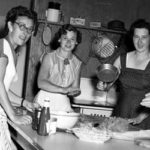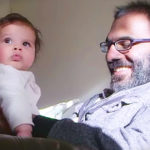A woman in one of my groups once commented, “There was a time when I couldn’t imagine feeling alive again, and now I freak out when I realize I haven’t thought of my partner for a couple of days.” This response is not unusual; some people say they prefer the pain of grief over the uneasiness and apprehension that comes from starting over. As frightening as an undefined future can feel, you have two choices: you can (1) sink your stake of grief deeper and live in the past, or (2) pull up the stake and transform it into a rudder that guides you forward.
The first choice allows your grief to define the rest of your life; the second requires you to actively participate in who you are to become. By choosing the second option, you are signing up for what psychologists Tedeschi and Calhoun refer to as post-traumatic growth and Tom Attig calls relearning the world. Both imply that you become a student rather than an authority.
Getting rid of what you don’t want is one way of revealing what you do want.
Sue, an engineer who was in my first-year grief support group, later joined the second-year Starting Over program. A few months into the class, she said she thought she might be slipping into depression because she had no sense of direction regarding her life.
She considered setting goals for herself but said, “I can’t define goals if I don’t know what I want.” Sue then confided that she wasn’t sure she even wanted to live, but with two beautiful daughters in their early 20s, such thoughts made her feel selfish and guilty. After our group meeting, I approached her. As we talked, she assured me her love and responsibility toward her daughters would keep her alive.
A few days later, she called saying she would not be attending our next month’s session because she was flying cross-country to an artist’s retreat. I was surprised but pleased that she had made plans.
Returning to the group the following month, Sue reported the retreat was “okay but not great,” but the trip home was high drama. An hour or so from New York, the pilot made an announcement that wasn’t the typical “due to mechanical problems, we’re going to land in Kansas” update. Instead, he instructed the attendants to prepare the passengers for a crash. As Sue braced herself against the seat in front of her, she was stunned to feel an intense desire to live. Thankfully, the plane landed safely, and as our group ended for the year, I believed Sue was on her way.
Months later, she saw me privately, wanting me to help her develop more structure in her life. I laughed, saying she sounded like an engineer, and I loved hearing her laugh in return. A few weeks later Sue showed up with long scratches on both arms. When I commented on them, she said she was removing a long hedge of shrubs in front of her home — by herself. She had always hated what had been planted and decided it was time to dig them up and plant what she wanted. My inclination was to suggest that she get some help, but I thought better of it.
We had been working with the four key questions outlined in my book Gaining Traction, to help her define what she wanted to include in her life going forward. One of the questions is “What don’t you want to include in your life?”
Even though the shrubs had not been on any of Sue’s lists, she was, indeed, learning to define what she wanted by figuring out what she didn’t want. She was also metaphorically nurturing her post-traumatic growth by planting and nurturing a new hedge.































